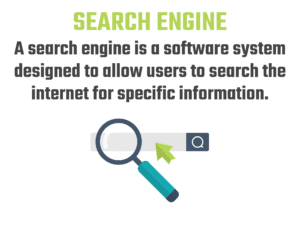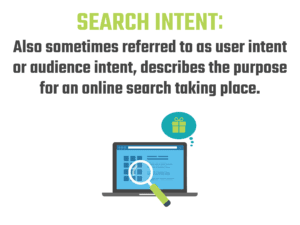
by Natalie Karr | 17 Mar 2023 | SEO
Reading Time: 4 minutes
There are countless factors of importance that contribute toward a website’s
SEO (Search Engine Optimisation) performance and SERP (Search Engine Results Pages) rankings, and one is internal linking within a site.
Given that there are now so many aspects of SEO for marketers to manage, anything that doesn’t reach off-site can be under-estimated and left unconsidered: but internal linking for SEO should not be overlooked and here we explain why.
What is Internal Linking?
An internal link is any link from one page to another within the same website or domain. Users of a website use these links to navigate around the content on the site and to find the content they want, and (hopefully) take a desired ‘conversion’ action. Internal linking for SEO refers not just to the easy navigation of a website for its users, but also for the navigation of search engine crawlers around the domain to determine its content, appropriate audience, authenticity and usefulness.
How Internal Linking For SEO Fits in With Other Aspects of SEO
Internal linking is not a direct SEO contributor in the way that keyword usage or mobile responsiveness is. It does, however, act as an indirect contributor. Internal linking around a website connects content and helps the ‘crawlers’ of search engines build a contextual map in order to rank it appropriately.
While external linking may demonstrate authenticity and trustworthiness to search engines from external sources, internal linking helps it then decide how to rank its content: creating a hierarchy by providing more important, content-heavy and most-visited pages more link equity than those that aren’t frequented or found to be useful. As a result, the more internal links to a page establish higher potential for good SEO ranking performance.
Why is Internal Linking for SEO Important?
Google and other search engines may be able to read your webpage as it stands alone, but there is only so much information that can be gleaned from a single page. Internal linking allows search engines to better comprehend not just the topic but also the value of a website, by maximising the content to be analysed. Internal linking allows search engines an indication of which pages are most important, and so help best present websites on SERPs in the most effective manner.
Internal linking is also positive for UX (User Experience) as it allows users to navigate and identify useful content, engaging users for as long as possible on the site and ensuring they’re able to access as much information as they need to before leaving.
Both benefits of internal linking are important, but it is critical that webmasters and marketers balance the two.
How do Internal Links impact on Bounce Rates?
The Bounce Rate of a website or page is the amount of users, usually expressed in a percentage, that arrive on a domain and then leave the domain to ‘bounce’ elsewhere: either to head back to a search engine, to visit somewhere else online, or to close the browser entirely. Bounce Rates vary hugely across industries and page types, but generally speaking, a lower Bounce Rate is better than a high one as it indicates the content within a page is engaging, valuable and relevant to the audience.
Internal linking for SEO or just for navigational purposes helps lower a website’s Bounce Rate and increasing the average overall time on-site as it encourages users to spend longer on the domain and ensures they needn’t immediately click elsewhere for information. This can help organisation’s websites gain competitive advantage above others and better their conversion rates.
How is Internal Linking Positive for UX?
Without internal linking throughout a website, users will only access the information or content on the page which they’re on and will be unable to take any further actions. This will inevitably result in them having to leave the site and search elsewhere for whatever it is they’re looking for if not immediately found; unless it is somehow addressed on the single page.
Internal linking for SEO promotes a good UX: keeping users on the domain for longer, presenting them with links relevant to their interest and encouraging further exploration. All of this demonstrates brand authenticity and trustworthiness, creating an overall positive perception of the website.
Types of Internal Links
There are two main types of internal links within a website.
The first, and almost always present (and certainly almost always required!) links are navigational links. These are those present on the homepage and supplementary webpages and menu that allow users to easily move around the site, accessing the pages they need to.
The second type of internal links are contextual links. These are links embedded within other on-site content, pointing users to other interesting and related content within the site. Contextual links encourage users to work around the website and allow search engines to understand the value of such content. The more contextual links a webpage receives, the higher up the hierarchy and the added importance search engines will add to it.
Both types of internal links are important and both can be considered positive contributors toward both UX and SEO.
Internal Linking Best Practices
Search engine algorithms and best practices shift and change all the time, but there are some that can be followed for internal linking processes.
While there is no definitive limit to how many links should be included on any one webpage, Google has indicated that its crawlers have the ability to read hundreds of links per page. However, a balance must be drawn here between ability and functionality. While it may be considered beneficial for search engines to have hundreds of links to move between and read, this is likely to result in a poor UX through the likelihood of incorrectly or mistakenly clicking links and the interruption of content.
It is best practice for webmasters and marketers to review their internal linking regularly in order to ensure they are not missing any obvious opportunities that could prove beneficial for users. This includes a scan of content that may be appropriate for related topic linking and the inclusion of descriptive and appropriate anchor text.
Where to Begin with Improving Internal Linking for SEO
Businesses should begin their internal linking and SEO practices with a full website audit to ascertain a current position and to assert the best areas for improvement and work moving forward.
Specialist SEO experts such as Woya Digital are able to offer full service packages that help better internal linking for SEO and best practice, as well as ensuring these processes line up with other aspects of SEO to rank higher, reach the right audience/s and gain competitive advantage above competitors.

by Natalie Karr | 8 Feb 2023 | SEO
Reading Time: 4 minutes
SEO can seem a minefield, with a myriad of acronyms, jargon and industry terms to navigate and ever-changing goalposts of algorithm preferences, best practice protocols and software tools.
One such term amongst the many is ‘website bounce rate’. Let’s explain what it means, how important it is, and how it can be improved to boost overall SEO performance.
What is a Website Bounce Rate?
A website bounce rate is a statistic usually expressed in a percentage, and refers to the amount of users who arrive on a web page and then leave the site altogether without navigating through to another page, or taking an action on page.
Also known as a ‘single page session’, it gives an indication of the prevalence of those visiting a page, not taking any other action on the website, and leaving. This is considered a sign of the effectiveness of any given webpage on a site as, unless the desired effect for a page is solely to be read and then abandoned, its purpose is not being properly fulfilled.
What is Considered a Good Website Bounce Rate?
Website bounce rates vary hugely between industries and site types and so a perceived ‘good’ or ‘bad’ rate can be difficult to ascertain. The average website bounce rate online varies hugely, and so it’s near impossible to set a goal for a business’ online presence without some solid market research.
Website bounce rates also vary dependent on the device users are accessing the site from. Mobile devices result in an average bounce rate of 51% across all industries simply due to the brief nature of their typical usage, whereas tablets sit at around the 45% mark and desktop computers nearer 43%.
This means that it’s critical for businesses to take device usage into account, as they are more likely to have a higher website bounce rate if the majority of their users are using mobile devices. Traffic sources are also sometimes responsible for increasing website bounce rates, with visits originating from social media and paid ads often resulting in less engaged traffic.
It’s near impossible for any website bounce rate to be below 20%, as human behaviour simply can’t be accounted for, and so it’s not advisable for organisations to aim for 0%.
A bounce rate over 70% would, in most industries, be considered negative but is usually fairly easy to decrease as it’s often due to UX (User Experience) issues: such as poor design, excessive bots, browser incompatibility or tracking code errors.
How Website Bounce Rate Interacts with Other Aspects of SEO
There are many aspects to the overall discipline of SEO (Search Engine Optimisation) and so it’s worth noting that website bounce rate is just one of many factors that contribute to digital activity, presence and performance.
Technically, website bounce rate doesn’t directly influence page ranking – but it is an indirect factor. Higher bounce rates are often indicative of a UX issue that will impact on the overall performance of the site and demonstrates its usefulness to the algorithms of search engines.
How Overall Time-On-Site Affects SEO
Similar to website bounce rates, the time on-site (also known as the dwell time) is the amount of time a user spends on a web page or site before clicking elsewhere. A very low dwell time indicates that the page doesn’t meet the user’s search intent, and a longer dwell time shows genuine engagement. This metric demonstrates to search engines the authenticity, topic and overall usefulness of the website and so longer times are considered bette, but after 30 minutes of inactivity on a site, the session ends to account for untrue inflation due to windows/tabs left open unintentionally.
Website bounce rates and dwell times are different measures but both allow marketers and webmasters to understand user satisfaction and engagement with the content created.
What Bounce Rates Tell Us About a Site/Page
A website’s bounce rate can be considered a reliable informant factor of a page’s perceived value by users. Where a bounce rate is high or conversions aren’t happening where desired, new approaches can be trialled as the existing content obviously isn’t landing correctly with its audience.
One important metric to monitor is bounce rates from content that’s being linked to as a part of a paid campaign, as this can demonstrate the ROI (Return On Investment) on money spend. High bounce rates or low conversions from paid ads indicate a disconnect between the advert and the landing page and may result in wasteful expenditure unless the issue is addressed and resolved.
Website Bounce Rates Should Be Constantly Monitored
People change, attitudes change, online best practices change and website bounce rates change – and this is exactly why bounce rates need to be monitored on a continuous basis and not just as a one-off measurement of website performance.
With the algorithms behind search engines being constantly updated as well as consumer behaviours shifting, it’s not unheard of for bounce rates to ebb and flow, too. A rapidly changed website bounce rate can indicate a sudden website error or issue and so may be the first symptom of a problem that can be rectified swiftly.
Get Support With With Your Website and SEO
If you need to improve your website’s bounce rate or just need to understand where it currently sits and why, a specialist SEO company such as Woya Digital can help you comprehend things – and better your position.
Bounce rates are often easily shifted into more positive territory with a little knowhow, and with the expert team at Woya on-board, you can be sure of a move in the right direction.

by Natalie Karr | 30 Jan 2023 | Digital Marketing
Reading Time: 5 minutes
SEO has almost become a buzzword acronym amongst some businesses, insisting that they’ve ‘done it’ and that because they can be relatively easily found online that their efforts have been fruitful. In truth, SEO is a constantly moving and shifting activity and one in which no business can not afford to stop investing time and effort into.
Without specific SEO expert support, the chances are high that a business’ online search ranking will suffer, and that competitors will benefit from this advantage.
Part of the service that the SEO agency or providers working with your business should be providing, is a regular SEO analysis report highlighting the work carried out, the changes and gains achieved by the consistent SEO work, and any issues to be addressed.
What SEO Is, and What Value Working with SEO Experts Brings
SEO is an acronym for Search Engine Optimisation: the practice of ensuring the content an organisation produces online can be easily read, understood and ‘filed’ by the search engines who crawl their website. The desired result is for a business to achieve the top listing on SERPs (Search Engine Results Pages) related to queries made relevant to their products and/or services. Being ranked higher than competitors in search results gives distinct advantage as consumers are proven to click the top links first.
For many years, SEO efforts were focused around the basic usage of relevant keywords or terms in text content. This allowed search engine crawlers to easily and rapidly determine the topic of a site and organise its results rankings accordingly. However, as search engines have developed and grown, their algorithms are now considerably more intelligent and thorough – which has resulted in a wide range of factors contributing toward rankings. Indeed this is an ever-changing picture; with it now being estimated that Google makes at least minor changes to its algorithm twice a week.
It is clear, therefore, that businesses cannot afford to stagnate or stand still when it comes to their SEO work. This is why many find it beneficial to work with SEO specialists. SEO specialists not only keep abreast of all of the latest developments in search engine algorithm updates and best practice solutions, but also are able to provide detailed information on areas for improvement.
Why is a Regular SEO Analysis Report Important?
An SEO analysis report is a detailed document that should be issued on a regular basis in order to provide businesses with a snapshot of their current SEO position as well as any threats to this and any potential areas for improvement.
This report works to keep businesses informed on:
-
- Their current rankings and any growth or decline in this position
- The value and ROI of their SEO investment
- Details of the SEO work or changes implemented since the last SEO Analysis Report was issued
- The results of any such SEO work provided
- The growth or benefit to the business receiving increased web traffic as a result of SEO
It is critical that in order to track and analyse ongoing SEO efforts, an SEO Analysis Report must be compiled and issued on a regular basis.
SEO Analysis Report Metrics
A decent SEO Analysis Report should include lots of helpful information for businesses to comprehend their position amongst competitors in search results and on areas in which their efforts could be improved.
Key areas in an SEO analysisrReport include:
Keyword Rankings
Keyword rankings refer to the position in which the business’ website or one of its online presences holds when a search engine user makes an enquiry including a keyword or phrase related to its products and/or services.
The keyword ranking portion of an SEO analysis report will include the keywords and current positioning alongside any growth/improvements and/or any drops in position.
SEO Visibility
SEO visibility demonstrates the level of a business’ online presence when related terms are searched. This will usually include details on organic traffic (non-paid traffic), the keywords most commonly being used to access the domain/s, the conversions being made once on the site, the amount of traffic to the site coming from social media channels (and any other related channels) and the CTR; Click-Through Rate.
SEO visibility gives a great overview of current user behaviour in both reaching the domain and activity once on it.
Traffic
Traffic information delves slightly deeper into the ways in which users access the website. This will usually include organic traffic, paid-for traffic (if appropriate), direct traffic (where a user types the URL directly into their browser search bar), social media referrals and traffic as a result of email contacts; as well as anything else that drives users to the site.
This can be broken down into an overview of current activity, as well as comparisons to year-on-year or relevant period-on-period activity.
Competitors
SEO efforts are made to gain competitive advantage above others. SEO specialists will analyse the top competitors in relation to the business’ website: which may include those the organisation already understands to be their competitors and others they hadn’t considered.
An SEO analysis report will detail the SEO visibility of these main competitors, their keyword ranking, the DA (Domain Authority) of their website and the prevalence/importance of any external links linking back to them.
Bounce Rate and Time On Site
On-site behavioural measurements such as bounce rates are important for not just SEO purposes but also the delivery of a good UX (User Experience). The time users spend on a site is indicative to search engines of the quality of the site’s content, with those who engage consumers for longer likely to rank higher than those who don’t: so businesses must aim to increase this time wherever possible.
The bounce rate of a site is given in percentage format and refers to the amount of users who leave (‘bounce’) from the site. Pages with high bounce rates are unlikely to be providing the perceived value that users are seeking.
Conversions and Conversion Rates
Once on a website, organisations must encourage users to take an action they want them to; such as making an online purchase, supplying their contact details, or registering their interest in a product/service.
These actions are known as ‘conversions’ and are the ultimate goal in having a user visit the domain. A conversion rate is the percentage of users to the site who then take that desired action – and the higher, the better. Businesses should always be looking to improve their conversion rate.
Domain Authority Ranking
The DA (Domain Authority) of a website is a score awarded that ranks how likely that site is to rank successfully on SERPs. Developed initially by marketing company Moz, these scores range from 0-100, with higher scores corresponding the greater likelihood of ranking well.
A DA score is based on a variety of data including the age of the domain, the accessibility of the site, the authority built from other sources mentioning/linking to it and the quality and variety of the content on it. While DA is by no means a prescriptive score, it is now a mainstream measurement that can be considered a good indicator of valid SEO efforts.
Digital PR
One factor often underestimated in its SEO impact is digital PR. This may refer to specifically orchestrated and enacted PR campaigns online that link to the business’ domain/s or the publication of guest posts/features elsewhere online to generate backlinks.
Where this activity has been carried out, details of it will be included in an SEO analysis report.
Do You Receive a Regular SEO Analysis Report from Your SEO Agency?
It is critical when working with SEO specialists that they are able to provide not just regular SEO Analysis Reports but also updates and open communication channels on shifting and changing best practices and algorithm standards.
Woya Digital employ a full-time team of SEO experts who are consistently at the forefront of developments in order to offer a seamless and unbeatable service to gain their clients constant competitive advantage. We create monthly SEO Analysis Reports for each client as standard, to keep them updated, nurturing and coaching them through the process rather than just publishing and presenting a report and not explaining it thoroughly. Get in touch today to understand more on what we can create for you!

by Ian | 12 Dec 2022 | Digital Marketing, SEO
Reading Time: 5 minutes
Businesses worldwide are competing to rank highly on Google search and other search engines, and the internet is full of tips for ranking number one on SERPs (Search Engine Results Pages), SEO tips and tricks and ways to influence the Google search algorithm behind-the-scenes to do better without having to pay for traditional web advertising.
Indeed, much is said about the Google algorithm and how it works, but here we present the facts: in order to best help you strategise your SEO and plan it to benefit your digital presence.
What is the Google Search Algorithm?
The Google search algorithm is a complex system of programming and coding used to retrieve data from its search index which can then present the most appropriate search results for the search queries made by the search engine user.
Google’s ‘crawler’ bots index the internet and store the data on what it thinks each web page is about, what purpose it serves and who the appropriate audience for its content are. The Google algorithm then works through the index it has created to deliver web pages ranked by relevance on its SERPs. Google’s search algorithm prioritises and marks out relevant results it believes best suited to the user’s search intent to give them the answer, information or data they’re trying to find.
What is an Algorithm?
Algorithms are now referred to often as consumers better understand the internet and the presence they hold on it, and in many circles are seen as a mythical beast to be defeated in order to get more likes, gain more exposure, get more traffic, or be ranked above competitors in search query rankings.
While indeed it is true that only a very few senior coders at any tech company will know the exact details of a website’s algorithm and its calculations, much of what an algorithm follows can be worked on through common sense.
In general terms, an algorithm is a set of rules to be followed in calculations by a computer program. For example, the Google’s search algorithm is the program that calculates which webpages rank where for a specific user search query made. In the case of Instagram, the algorithm is the program that calculates which users are presented with which content. In the case of TikTok, the algorithm is the program that calculates what the user is interested in, and features videos related to this in their feed.
Every website or program that has a bespoke user ‘feed’ will have an algorithm operating behind it.
How Does Google’s Algorithm Work?
Google search algorithm works by referencing its search index and analyses the factors upon each page to determine its relevance for ranking. While we don’t know the exact weight that Google puts behind each of the many factors of a webpage, we do know what constitutes a priority for SEO purposes. This includes:
-
- The exact search terms of the query made on the search engine
- The domain age, authenticity and domain authority (DA)
- The usability of the website including its loading speed, accessibility functions and security
- The mobile responsiveness of the site’s performance and its ability to switch format to one appropriate to the device on which its being viewed
- The keywords and topics used throughout the content on the site, and if there is relevant content
- Other websites that link to the site and how trustworthy they are.
Considering all of these factors, the Google algorithm judges which website pages are most appropriate to be featured and in what order.
This means that the more concise, clear and usable a site is, the higher it will rank when a relevant search query is made.

What are Algorithm Updates?
Of course, as with all tech, the Google algorithm is constantly changing to improve the service it delivers. While there are a couple of major updates made every year which cause a considerable shift to the algorithm and its programming priorities, its estimated that smaller algorithm updates are made around once a week!
Where a major update does occur (referred to as a broad core algorithm update), Google announces this ahead of time and provides some basic details on it so that businesses are able to prepare and shift their online practices to meet the new ranking factor requirements.
Top Factors of the Google Algorithm
No one knows exactly what the exact formula is for Google top ranking factors, as this information remains confidential to all but a few senior execs within the company. However, we do know that the following ranking factors are amongst the most important:
-
- High-quality content
- A mobile-first experience
- Page experience
- Page loading speed
- On-page optimisation
- Internal links between pages
- External links to and from other relevant sites.
Historically focus has been laid just on the usage of keywords and search query phrases but since Google’s technology has developed and improved, many more factors are now included and considered. While there are businesses who do continue just to rely on the same keywords and keyword repetition throughout their content, this can no longer form a comprehensive and strategic SEO approach.
Realistically, it doesn’t matter exactly which ranking factor is the most important, as all should be focused on with equal priority in order to develop a well-rounded user experience (UX).
What is the Latest of the Google Algorithm Updates?
The most recent minor Google updates were both in September 2022. One was a core algorithm update and the other focused on new product reviews. The latter didn’t offer any particular advice for site owners but the former was covered in an entry on the Google Search Central Blog. This advised that the update wasn’t anything for webmasters to worry about or that they should need to take direct action, but that high quality content was being uprated in its priority rating.
The most recent major Google broad core algorithm update was in August 2022 and was known as the Google Helpful Content Update. This focused on the concept of ‘people first content’. This update advised businesses to strive toward content creation for a target audience with their search intent and needs in mind, rather than the common approach of creating content simply for SEO purposes and because the business assumed that their website’s ranking would benefit from the repeated use of keywords and phrases.
While other small algorithm updates take place in Google weekly (if not daily), these do not require any specific action and businesses can consider their existing SEO efforts sufficient to weather such changes.
How Does the Google Algorithm Affect SEO?
The Google search algorithm is what businesses are speaking to when they enact their SEO strategies, and must ensure that relevant, accurate and clear information is conveyed throughout their site in order for the algorithm’s programming to best understand it.
This means that continuous improvement of all the website’s page factors must be made a digital marketing business priority, in order to rank as high as possible and ideally do so above competitors. While it may not prove productive for businesses to focus too much on the search algorithm and what it demands, it can make for a great foundation from which companies can understand what smart content creation and a positive UX means.
Get Support to Manage Your Business Google Ranking
Of course, not all businesses can hire a full-time SEO lead to work in-house. That’s why businesses choose to work with Woya Digital.
Our team of SEO specialists stay at the forefront of Google’s updates and best practices in order to ensure our clients gain competitive advantage and receive great exposure to both new and existing customers. Get in touch with our team to discuss how we can support you and to best understand what impact this could have on your bottom line.

by Ian | 30 Nov 2022 | Content Marketing, SEO
Reading Time: 5 minutes
Navigating SEO can be a tricky job for businesses, particularly if there isn’t the resource in-house to focus on digital marketing full-time.
We support organisations of all shapes, types and sizes to grow their organic digital presence, increase their search rankings, and to ensure their online exposure to both potential and existing clients within their target audience.
A common aspect within SEO is duplicate content issues. But why is duplicate content bad for SEO, and why? Read on to learn more and ensure you are producing valuable content and managing your online content in the best possible way.
How Does SEO Work?
SEO (Search Engine Optimisation), is the process of making sure that the content on a website is as apparent and clear as can be so that the automated algorithms behind search engine rankings know what the site is about, who it’s for, and what purpose it serves.
This, along with several UX (User Experience) metrics such as fast loading speeds, good accessibility, mobile responsiveness, web design elements and high security standards allow search engines to identify the best possible results for users when they make a search query through.
SEO is usually considered to be the optimisation of websites and web pages specifically for Google, as this is the market leader in the space. In most of the world, Google holds a 90%+ market share of online searches completed, although there are geographical variations that businesses will need to be aware if they’re targeting audiences in locations other than the western world.
What is Duplicate Content?
Duplicate content issues can be considered any identical content that appears in more than one URL online. This may be the result of a bot or other website copy-and-pasting content onto their own domain, or from a company publishing duplicate content or duplicate pages. This applies to written content and not necessarily to shareable content such as videos, photos or infographics.
Shorter bursts of text that are likely to be organically repeated such as strap-lines or short descriptions are not considered duplicate content for search engine purposes.
Google instead indicates that duplicate content refers to “substantive blocks of content within or across domains that either completely match other content in the same language or are appreciably similar”. There are no specific limits or word counts given to the definition of ‘substantive’ in this case and so it could be anything from a product description paragraph to a lengthy article.
Duplicate Content IS bad for SEO, But Why?
Technically, Google doesn’t penalise a site for producing content that is duplicate within its own domain, saying: “Duplicate content on a site is not grounds for action on that site unless it appears that the intent of the duplicate content is to be deceptive and manipulate search engine results. If your site suffers from duplicate content issues, and you don’t follow the advice listed in this document, we do a good job of choosing a version of the content to show in our search results.”.
However, this doesn’t stop internal or external duplicate content issues being bad for SEO. Where duplicate content exists – particularly where it is spread across more than one domain – the search engines algorithm must judge which is the original and which is the most relevant to appear in each search engines results or search rankings – which is an automated process and may not necessarily decide in the original website’s favour.
If a site duplicating content from another is an older domain, has more backlinks to notate authenticity, hosts other content more relevant to the topic or has a higher DA (Domain Authority) than the original, the search engine’s algorithm may decide to feature that same content above other results.
This can mean that competitors, industry press or even entirely unrelated websites gain competitive advantage above the original and are subject to more click-throughs and completed actions. For this reason, the removal of internal duplicate content across your website web page can be considered improving its UX.

How Does Duplicate Content Affect SEO Rankings in Search Engines?
Generally speaking, the issue with internal duplicate content that results in it being bad for SEO is that it will confuse search engines. This is due to two primary issues:
- Search engines will usually only show one version of content where the same content appears online more than once, and so it must differentiate between multiple versions.
- Duplicate content dilutes link equity as other websites also must choose between which version of a duplicate content to link to. This can affect the number of inbound links to the original source of the content, and as inbound links are a Google ranking factor, it can impact negatively on search engines ranking and search visibility.
Managing Duplicate Content Issues
Remove Duplicate Blocks of Text
Ideally, a website will have no more than one instance of anything that may comprise a ‘substantive text’, and so webmasters and digital marketers are wise to remove any multiple versions of copy to improve the UX of the site and make it clearer for site users which version is best suited to their needs.
Minimise Boilerplate Repetition
‘Boilerplate text’ is the repetitive text that some businesses are required to repeat around their domain for legal reasons, such as copyright notices or legal disclaimers.
Where this appears in the main body text of a page, it is likely to be considered as standard duplicate content by the algorithm, but of course the organisation may have no choice but to feature it. Instead, it is best practice for webmasters to use a shortened version on each page and link through to the full required legal text. This avoids unnecessary duplicate content and the confusion it may cause for search engines.
Prioritise URL Parameters and Variations
Minor page URL variations may result in unintended instances of duplicate content, and can prove pretty harmless but should be dealt with and removed if possible. Most commonly, these small variations are as a result of analytics codes, click tracking, print-friendly page versions and session IDs. Despite the URLs only having tiny differences due to their sub-domain status, this can result in search engines indexing two versions of the same website page.
The Google Search Console can be used in these incidences to set the preferred domain for crawling and to tweak parameters around these so that the search engines algorithm knows which to ignore. Google search console often provides many immediate answers that will affect search results. Ensuring early Google search console connectivity with your website will provide insight on matters such as duplicate page issues, multiple pages of external duplicate content and even internal duplicate content across multiple urls that could affect search results.
Pay Attention to Any CMS-Generated Pages
It is not uncommon for content management systems to inadvertently create duplicate content on a website without the business realising. This may be a result of a bug or a shifted standardised setting on the back-end of the software. It is imperative that businesses understand the inner workings of their CMS and know how to remove same content when it does duplicate.
Get Website, SEO and Duplicate Content Support
Duplicate content is bad for SEO, and is an important aspect of your SEO that needs to be managed efficiently. Woya Digital manage SEO for businesses of all shapes and sizes, and can help advise on how best to manage and fix duplicate content issues. Get in touch to learn more and let us optimise your site to gain the best possible online search results!

by Ian | 21 Nov 2022 | Digital Marketing, SEO
Reading Time: 5 minutesBusinesses simply can’t afford for their website to not be listed on Google. With the Google search giant processing over 99,000 searches every single second, the potential is extremely important.
But for Google search results to list a website or page, it must first know it exists and match it up to relevant search terms ‘behind-the-scenes’ using its algorithm programming. This is called Google indexing.
But how does this happen and what is its relevancy to an overall SEO strategy?
What is Google Indexing?
Search engine indexing (or Google indexing in the case of Google), is the automated process of a system collecting, parsing and storing data it finds online. This data is then stored in the Google search index database so that when a search engines user carries out a search, Google can reference this index for the appropriate information and indexed pages, rather than scouring the entirety of the internet every time.
Google indexing is a highly complex process and incorporates interdisciplinary concepts from computer science, cognitive psychology, mathematics and probabilities, informatics and even neuro-linguistic programming.
Why is Google Indexing Important?
Google is the world’s biggest search engine, with a market share of over 90% worldwide. This means that even if it isn’t the most popular search engine in a business’ target location, it is still simply too large to ignore when it comes to strategizing for digital marketing.
If Google doesn’t undertake crawling and indexing on your website, it won’t just not rank well on Google – it won’t rank at all on Google.
If businesses don’t ensure that their digital presence is listed on Google in some way, shape or form they will lose competitive advantage to brands who are listed, who will benefit from the massive traffic that ranking well on the Google search engine can bring.
While not all other sites rely on Google’s search index in particular for their search results, several other systems do, and so it should not be discounted even if it isn’t the primary target system.
How Does Google Indexing Work?
Google indexing takes place when Google’s ‘crawlers’ (that is, automated software programs) visit publicly accessible website’s pages and follow their links.
This helps them travel from page to page and store information on what the pages on your site are about, who they’re for and what they’re aiming to do. The Google algorithm also judges the the site/all of your pages on their User Experience (UX), performance, accessibility and content quality to ascertain how and for what the site should rank when users completes a relevant search.
Google indexing can only happen if a website is publicly available. If it requires a log-in, is in a test environment or is ‘hidden’ from public consumption, this will prevent Google’s ability to read the site and it will remain un-ranked. This allows businesses to present exclusive content to subscribers or members but does mean that anything they wish to include on search engine rankings must be prioritised for public pages.

How to Tell Google to Index Your Site
If a website or page has yet to be indexed by Google, the webmaster can request that the crawlers navigate it on the next occasion they’re able to. To do this, a webmaster tells Google through the Google Search Console tool and the crawlers will index the page/s whenever possible.
Where webmasters or digital marketers wish to rank, they should prioritise Google indexing as once a site has been crawled it will be periodically re-visited, so can be ranked on search engine results pages even before the full site content has been populated.
How Long Does Google Indexing Take?
There’s no one-size-fits-all timeframe for Google to index a website, although generally it takes longer for larger sites with more content than it does individual pages with little or short-form content.
The amount of time it takes to get a site indexed is influenced by Google’s current workload (ie it will take longer during periods where a major update or change is being rolled out), but also how many websites are being submitted for indexing at any one time.
Anecdotally, webmasters and digital marketers state that it has taken anywhere from 4 days to 6 months to get their site indexed for the first time. However, this is almost always expedited by requesting indexing through the Google Search Console (as mentioned above), so this is recommended.
Duplicate content will harm the quality of your site and Google will penalise you for this.
How Does the Process of Google Indexing Relate to an Overall SEO Strategy?
Any digital marketer embarking on enacting an SEO strategy should prioritise Google ranking as an effective way to gain targeted organic traffic. In order to best ensure adequate and appropriate ranking for relevant searches, all websites should be subject to timely, consistent and pertinent new content upload as well as hosting a clear sitemap, offering mobile responsiveness and ensuring fast load times.
Google indexing can be considered the foundation for an SEO strategy. Once the site and all the pages have been indexed, a more thorough online presence can be built using target keywords and advertising, further new content creation and an increased focus on the overall User Experience.
How To Fix Indexing Issues
It is not enough for webmasters to create web pages and just expect them to be crawled and indexed by Google, instead there are a variety of best practices they should look to meet. If any of the following issues are experienced, they can be easily rectified by doing the below:
Site is not indexed because it’s too new – you can still request indexing through Google Search Console, but a newer domain is unlikely to get higher rankings than an older one as its authenticity and trustworthiness can’t yet be fully verified. As more website content is added and the site ages, it will be re-indexed and re-prioritised.
A recent redesign should have improved SEO, but hasn’t – it may simply be that Google hasn’t re-indexed the site since it has been improved. A request for re-indexing can be submitted through Google Search Console.
A sitemap wasn’t in place when the site was indexed – all websites should have a sitemap somewhere in order for Google to easily crawl its pages. If, for whatever reason, this wasn’t the case when the indexing happened, the site map can be submitted directly to Google through the Google Search Console tool and then it’ll be re-read the next time the site is crawled.
Site isn’t mobile responsive – Google prioritises websites that provide a good User Experience over those that don’t, and so if a site isn’t mobile responsive, Google is very unlikely to favourably rank it. In this instance, the webmaster should seek out a redesign of the site to ensure better accessibility.
Where to Get More Help with Google Ranking
At Woya Digital we have a whole team of SEO specialists who work around-the-clock on keeping up with Google’s latest updates and developments.
We work not just for but also with our customers to ensure their SEO goals are met and that their online presence works perfectly to fit their needs and wants, as well as the idiosyncrasies of their business and target audience.

by Ian | 10 Nov 2022 | Content Marketing, SEO
Reading Time: 4 minutes
Search Engine Optimisation (SEO) is not just a ‘nice to have’ marketing tool for businesses presenting online – it’s not an option! Showing up in the right place at the right time digitally for customers searching online, is critical for any organisation wishing to gain competitive advantage, remain relevant and grow its audience.
The discipline of SEO covers a wide of variety of topics, but a prominent one is keywords. Here specifically we’re going to flesh out long tail keywords!
What Are Long Tail Keywords?
Most keywords refer to a single word or couple of words that match together to create a searchable phrase that users type into a search engine in order to find results. Long tail keywords are formed of between three and five words usually (though no such numeric limit actually exists) and are, by their nature therefore, more specific and less common.
The term ‘long tail keyword’ comes from a book called The Long Tail by Chris Anderson, which focuses on the niche of markets and products, and how successful focusing on a specific sector or area can be.
For example, a standard keyword search may be ‘pink trainers’ but a long tail keyword search would be ‘pink Nike trainers size 5’.
How Do Long Tail Keywords Work?
The longer nature of long tail keywords compared to briefer search terms means they are more specific and will as a result drill down more specific (and hopefully relevant) search results. For search engine users, they present an opportunity for more appropriate results and ideally, less clicks to find exactly what they want. For businesses, they present an opportunity to target more niche markets.
Generally speaking, long tail keywords are less competitive than more generic keywords because they’re designed to better reflect how users make queries. They are more likely to attract high-quality traffic to a website, which is likely to increase conversion rates.
Often, long tail keywords aren’t the first search query typed in by search engine users. It is not uncommon instead for users to type in a more generic search term, uncover generic results, and then use long tail keywords to drill down to more specific results.
How Do Keywords Form Part of an SEO Strategy?
Statistics suggest that over 70% of all search queries are now made using long tail keywords, with voice search being a key factor in consumer behaviour.
Users are more likely to use the same types of phrasing they would in colloquial speech, in such searches – an evolving behaviour recognised and catered for by Google with their focus on NLP (Neural Linguistic Programming) in search algorithms to produce relevant results. This high level of long tail keyword search means that including these keywords in an SEO strategy is imperative.
Long tail keywords should be used to create blog posts, web pages and other relevant content to explain the specific topics within the agreed product or service pillars of the business. Together, the relevant long tail keywords should create a cluster of information around each pillar topic, with the algorithms behind the search engines depending on these to connect users with exactly the details they’re looking for.
Once uploaded, businesses should monitor the performance of each piece of content and continue to produce relevant content around areas of both shortfall (to bridge the gap and supply info where it doesn’t already exist) and success (to continue to build upon the content that users find useful).
Long tail keywords should be focused on alongside other keyword types, as part of an overall concerted effort to improve a websites content quality and quantity.
Different Keyword Ranking Difficulty Levels
The most commonly used generic search terms, by their nature, have the most competition online. This means that it is difficult for businesses to rank highly for them.
Long tail keywords tend to be easier for businesses to rank highly for as they’re searched less and are considerably more specific. Generic search terms sit at the head of search, a tiny number of keywords with exceedingly high search volumes. Long tail keywords constitute millions of search terms all with very low search volumes. This leaves the opportunity for digital marketing and content production around long tail keywords to be more prevalent and more prosperous.
The type of keyword being used or focused on isn’t the only factor that contributes to the difficulty or ease of ranking. Other such determinants include the content type, the Domain Authority (DA) of the website on which the content is published and the links to and from the content piece.
How To Identify Relevant Keywords To Focus On
There are various tools for keyword research, all of which will advise of relevant keyword combinations (both generic and long tail), their competition levels, search volumes and CPC (Cost Per Click) fees. However, these research tools should be used with caution as oftentimes they are created independent of tangible human input and can be based around theory rather than actual user behaviour, particularly in fields where the relevant keywords may include an ambiguous word or phrase.
Ideally, once identified, businesses should look to target long tail keywords that are low in competition and high in volume.
It is not enough to just look up keywords and produce content including them. Instead, businesses should look to incorporate long tail keywords into a thorough SEO strategy that looks to improve all areas of a website’s accessibility and relevancy, and includes regular content creation as part of this.
At Woya Digital, we have a team of SEO experts who work on creating tailored SEO strategies to best improve our customers’ competitive advantage. Get in touch to learn more!

by Natalie Karr | 7 Nov 2022 | Digital Marketing
Reading Time: 6 minutesJust about the whole world now relies on online search engines to look up information, compare products and services, and search for … anything really!
To ‘Google’ has become a verb, the behaviour of looking something up online has become the norm for many in the quest for data and some 8.5 billion queries are made to Google every day.
But how do search engines work and how is best to take advantage of them to benefit your business?
What is a Search Engine?
When asked what a search engine actually is, many would simply respond with the name ‘Google’, but in fact there are many search engines and while all do slightly vary, their premise is the same.
A search engine is a software system designed to allow users to search the internet for specific information. This is usually done via a textual web search query, in which the user types keywords into the search engine and is presented with a line of results on a SERP (Search Engine Results Page). The results are usually provided ranked with the most likely to be accurate and useful for the user’s search queries.
While what we think of as search engines are often websites such as Google and Yahoo, such software also exists to search through the content of individual websites and databases.

What Happens when a Search is Performed?
When a search is performed, the system reviews its index of web pages to find those it believes are relevant to the search. This judgment is carried out by a program known as a search engine algorithm, which identifies the most relevant results to the search query and then presents these search results on a SERP.
In most cases, the search engine will review its index of web pages regularly in order to ensure it is always presenting the most up-to-date content possible. It will also update its algorithm often in order to maintain current technology and continuously improve the results presented.
The time between the search query being input and the web page index being scoured for relevant results usually takes just seconds; and often just a fraction of a second.
What is a Search Engine Algorithm and What is its Purpose?
Lots is spoken about the algorithms used across search engines and social media but it seems that genuine understanding of them is very low.
A search engine algorithm is a computer program that runs on a collection of formulas to determine the quality and relevancy of a particular web page or advert to a keyword or phrase that may form part of a user’s search query.
The purpose of an algorithm is to provide the most appropriate search results possible for the user, which in turn result in the users being more likely to return to the search engine again and it being able to gain competitive advantage above others. For this reason, search engine algorithms are frequently updated and improved: with Google updating theirs an estimated twice a week minimum!
What are the Most Popular Search Engines?
Google holds over 92% of the world’s search engine market share, but there are other search engines that hold significant share in particular geographic locations. Bing, owned and operated by Microsoft, is considered the nearest competition to Google and holds around an 8% market share. Baidu is the third largest globally, but this is largely due to its dominance in China, where it holds around 73% of the total market. Generally speaking, any business looking to market in China or the surrounding territories needs to ensure they have tailored their search marketing practices to Baidu rather than Google.
Other major search engines include Yahoo, Yandex, Ask, DuckDuckGo, Naver, AOL and Seznam.
As a result of Google’s market dominance, most business’ search marketing and SEO (Search Engine Optimisation) efforts focus toward it and it’s considered the status quo in the western world to tailor search strategies exclusively for this, with other search engines not considered a priority.
How Do Search Engines Differ?
While all search engines do run on the same basic premise of indexing websites and then carrying out the analysis of these websites using an algorithm to present appropriate results, they do vary in the way in which they carry out this analysis.
Google’s algorithm has developed hugely over the last ten or so years and now lands its focus on matching up the intent behind the search being made and the results, whereas Bing continues to spotlight on the keywords being used as a baseline.
Yahoo has been powered by Bing since 2011 and so displays search results using much of the same criteria as it. Yahoo places more importance on domain age than Bing, but similarly focuses on keywords and meta data.
In China, Google and all Google products are banned; leaving Baidu as the most important search engine in the country. While Baidu’s algorithms can be considered not entirely dissimilar to Google’s (there is a large amount of AI and intent-based calculations utilised), the system behind Baidu actually analyses web content to a higher degree than Google and so can take a little longer to update initially. Baidu really only works well in simplified Chinese and prioritises those domains registered in China above anything not local to the country or its borders; and is very heavy on censorship.
How Do Search Engines Provide Search Results So Fast?
Search engines are able to scour millions of sources for analysis and ranking in a fraction of a second in order to present adequate and appropriate search results, and the key to this speed is all based around its ability to index.
When a search engine crawlers ‘crawl’ and index the web, they essentially create a database for that search engine to use. This negates the need for them to search the entire internet every time a query is made and instead provides their own resource to search through.
Consider being asked for a chow mein recipe, rather than go and take out every book in the library on Asian cuisine and leaf through them, you can grab the most appropriate title, skip to the index and look up ‘chow mein’ under C. With everything already well categorised, it’s considerably easier and quicker for the search algorithms behind-the-scenes to categorise and analyse the information at hand.
Google won’t comment on the exact size of its indexed internet records but has admitted that it’s over 100 million gigabytes in size, and realistically, it’s probably several times that. To give you an idea of how big that is, it’s 100,000,000,000,000,000,000 bytes! However, it’s worth noting that only a handful of people employed by Google have a true idea of the exact technology behind the Google index, and many of those working on search algorithms aren’t informed on how all areas of the business work together to produce the results they do.
How to Tell Search Engines to Crawl your Website
For a website to appear on a search engine, it must be included in the system’s ongoing list of indexed pages; or it is not able to analyse it for relevant content when a search query is made.
Firstly, any ‘noindex’ tags from the coding and programming of the website must be removed. These tags direct search engines to bypass the domain’s content and so don’t allow search engine bots to ‘crawl’ the pages and add it to their index. Businesses may wish to keep these tags in place until their website content is complete, but at this point should remove them entirely.
In order to optimise the way search engine algorithms are able to crawl a site, it should have a site map and a full robot.txt file.
For Google indexing, websites can be submitted directly to the search engine using the Google Search Console. Domain ownership will need to be verified.
For Bing indexing, websites can also be submitted directly through their Bing Webmaster Tools: and if a Google Search Console entry already exists, this can be copied straight across. Submissions to Bing automatically index to Yahoo, too.
DuckDuckGo automatically indexes the internet and so doesn’t require any formal submission, although it prioritises those results on Bing, and so if a Bing submission has been made, it will be picked up quicker than those not listed on that system.
To index a site to Baidu, a localised site in simplified Chinese with either a .com or .cn domain will need to be created. This can then be submitted directly through Baidu Webmaster Tools.
Where to Get Help with Search Engine Optimization
If you’re not sure which search engine is best to target your SEO and search marketing practices toward, or think that you may need to branch out a little with your efforts, get in touch with Woya Digital. Our in-house team of SEO experts can help advise, guide and draw up a strategy to maximise exposure and success online.

by Natalie Karr | 1 Nov 2022 | SEO
Reading Time: 4 minutesThe practice of SEO (Search Engine Optimization) is growing ever more comprehensive as the programming and algorithms behind search engines become cleverer and more complex.
At the heart of this all is the need for search engines to present the most relevant possible search results for users, and it’s this that they base all of their systems and processes around.
Search intent forms the basis from this and from there, all efforts are focused.

What is Search Intent?
Search intent, also sometimes referred to as user intent or audience intent, describes the purpose for an online search taking place.
The reason that anyone conducts a search online likely dictates the most appropriate results for it. For example: is the user looking for information? Do they want to make a purchase? Are they searching for a particular brand name and only that website will do? The user’s search intent is the ‘why’ behind the action being completed.
The Four Types of Search Intent
There are four primary types of different search intent, each with its own purpose. These are:
Informational
Those conducting informational searches are looking to find some specific information. These searches are often, but not always, framed as questions, with informational keywords, and can be simple or fairly complex. Searches made with informational intent include those such as:
– What is the capital of Morocco?
– Directions to London Luton Airport
– How does blockchain work?
– How do you say hello in Mandarin Chinese?
Navigational
A search made with navigational intent is done to find a specific website or web page. The user already knows where they want to go but either don’t know the URL to type in directly to the address bar or find it quicker or easier to search for it instead with navigational keywords. Searches made with navigational intent include those such as:
– Twitter
– Peugeot official website
– LinkedIn login
– BBC news headlines.
Transactional
A user searching with transactional intent is looking to make a purchase and in many cases, already know what it is they’d like to buy and are looking for a retailer to buy it from. Searches made with transactional keywords include those such as:
– Buy MCFC kit
– Newest iPad cheap
– John Lewis coupon
– Zoom pro subscription.
Commercial Investigation
When a user is searching with commercial intent, they are also looking to make a purchase but have not yet decided which specific product or service they’re going to buy. This is part of the user journey online ahead of a transactional search, and may find the user searching for reviews and comparisons as they seek to make an informed purchase decision. Searches made with commercial investigative intent include those such as:
– Best vegan eyeliner
– Macbook Pro review
– Plumber near me
– Trustpilot vs Feefo.
Why is Search Intent Important?
Google’s number one goal is matching search intent of their users with relevant search results, in order to ensure they are providing as accurate and appropriate search result pages as possible, to continue their reign as the most successful search engine in the world.
When content on a website is properly tailored toward an audience’s search intent rather than simply whatever message it is the business wants to convey, they are able to meet their user’s needs by satisfying search intent: demonstrating relevancy, authenticity and helpfulness to Google’s algorithms. These factors all feed into the overall SEO ranking and are likely to boost the position of the webpage, as well as increase conversions and time spent on the domain as well as lowering bounce rate.
Realistically, if a business isn’t able to adapt and create content to meet the needs of user’s search intent, they’ll find that they’re unable to cater appropriately for their target audience, and that audience will move to other online domains, including likely those of their competitors.
How to Identify Search Intent
Search intent can often be identified through the language used in the search. For example, the word ‘buy’ is only likely to be present in a search made with transactional intent, and ‘how to’ in a search with informational intent.
Generally speaking, you can determine the search intent behind a search if it includes the following language:
Informational intent: who, what, where, when, why, how, guide, tutorial, resource, ideas, tips, learn, examples.
Navigational intent: brand name, product name, service name.
Transactional intent: best, good, top, review, testimonial, comparison, product attribute (such as colour/size/specific feature).
Commercial investigative intent: buy, coupon, voucher, order, shop, purchase, price, cheap.
Of course, this isn’t necessarily accurate at all times dependent on the exact phrasing of the search, but it forms a good guideline. If a business is using a keyword research tool they may be able to filter relevant search terms by intent.
Google’s Guidelines on Search Intent
Google has provided exact guidelines on search intent and how webmasters can and should understand and work with it. These are known as the Google Quality Raters Guidelines.
Google employs quality raters who conduct search queries online before rating how appropriate and accurate the results they are served with were for their search intent. The guidelines that inform these raters highlight the importance of search intent along with the different types of intent and the impetus that Google puts onto intent, but explains that intent may vary between location, time and device.
For example, a search for a supermarket on a mobile device is likely to be a user looking for a nearby location, but on a desktop or laptop computer is more likely to be intended for an online order. When the search is made early in the morning or late at night, it’s more likely to be an enquiry for opening hours. The intent varies based on the way in which the search is made.
All of this signifies the prestige that Google holds behind user search intent, and how it builds its algorithms and systems around it to meet these needs. This includes the introduction of the Google BERT update in 2019 which focused on natural linguistic programming to inform the search engine of the intent behind the search and help more accurately convey appropriate results.
How to Optimise to Meet Search Intent Needs
Businesses can best analyse and optimise their digital presence to meet user search intent needs through collaborative working with an SEO specialist. At Woya Digital, we have a team of SEO expert professionals in-house who analyse business’ web presence entirely bespoke: taking on each job as an individual entity and never applying a one-size-fits-all approach.
We can help you meet the needs of both your potential and existing customers online through content optimisation to meet the needs of their search intent – raising your organisation’s profile, rank and success online all at the same time.

by Natalie Karr | 10 Oct 2022 | Digital Marketing
Reading Time: 4 minutes
Search Engine Optimisation (SEO) is an ever-changing discipline that requires continued activity and effort in order for businesses to remain at its forefront. With over 3.8 million searches happening on Google per minute worldwide, businesses who need to gain and maintain competitive advantage above others need to ensure that SEO remains a digital marketing priority.
To centre SEO appropriately, it is critical that an SEO content strategy is put together and followed.
Why is SEO Important for Businesses Online?
Whether or not a business sells its products or services digitally is no longer a consideration when it comes to having an online presence – because no matter how an organisation operates, consumers will expect to be able to find information about them on the internet.
This means that even if a business’ web presence is minimal, it needs to have one, and such presence needs to include relevant details for their customer base. Never have marketplaces worldwide been so crowded, so in order to maintain (if not grow) an audience, all businesses must ensure they appear in the appropriate place digitally.
‘Googling’ is now a colloquial verb and consumers of all ages defer to looking for information they need online rather than through manual means. With some 5.6 billion searches happening every day on Google alone, search engines are now very much the data source of choice – and if businesses aren’t there, they will surely lose out to their competitors who are.
What is an SEO Content Strategy?
A key part of SEO is to produce and publish content online that is relevant to a brand’s products and services, appropriate and helpful for their audience and shareable for onward promotion. This usually includes the creation of blogs, press releases, infographics, data sheets, videos and other content for user consumption.
An SEO content strategy provides a coherent plan for businesses to follow with their content creation. This action plan can be used to ensure content is appropriate, regular and of a quality high enough for onward sharing and publication as an organic marketing tool.
Why an SEO Content Strategy is So Important
Working to a thorough SEO content strategy holds many benefits:
Free Search Rankings
Organic search, search result placements that have not been paid for, is heavily influenced by a website’s content and so a comprehensive SEO content strategy helps promote ranking success. While businesses can choose to pay for placements, organic search results are considered more powerful and are more likely to receive click-throughs and genuine conversions.
Guaranteed Quality Content
A proper SEO content strategy will allow a business to ensure that they are producing relevant, regular, high-quality content that is appropriate for their audience. Continued monitoring of content performance will allow for further content production two-fold: where there is a gap or shortfall in information available, and the re-purpose of content where it is already found to be useful and successful for its audience.
Maintained Relevancy
It is, unfortunately, quite common for businesses to begin to focus on SEO and get swept away in content creation that is only broadly related to their brand and not niched enough to be considered helpful by the target audience or segment, therefore resulting in a waste of time and resource for little tangible result. Following a comprehensive SEO content strategy helps ensure that all SEO activity is directly targeted and ‘on-message’ for the optimum chance of success.
The Main Elements of an SEO Content Strategy
A thorough SEO Content Strategy will comprise of several elements. These include:
Relevant Keywords
It is important for businesses to properly research which search terms their potential and existing customers are using in order to look up relevant products, services and brands. Once completed, keyword research will provide a list of targeted terms for each pillar of the business, and content can be crafted around these, giving users a higher chance of arriving on the business’s webpage for the term.
Matching Search Intent
It’s important to create content that matches the intent of the search being placed. For example, content to match a search query beginning ‘what is’ should be definitive and informational, content to match a search query ending ‘buy now’ should deliver basic purchase decisions and on-page transaction functionality, and content to match a search query including ‘inspiration’ should deliver ideas and musings.
On-page SEO Activity Enacted
While content may be king, it isn’t the only aspect of SEO that needs to be considered. On-page SEO elements such as meta tags, accessibility tools, URLs and descriptions, all need to be optimised to further reinforce the website’s relevancy and authority to the search engine algorithms that will judge its ranking.
Varied Content Production
Many businesses choose to add a blog section to their website, write up some articles based around key search terms, and never take any further action. However, in order to remain current in search engine rankings throughout an ever-changing digital landscape, content should be produced in different ways (for example; blogs, infographics, videos, audio files) and should be re-purposed, re-jigged and re-used for evergreen topics and the optimisation on onward sharing.
Get Support with Your SEO Content Strategy
Woya Digital are experts in crafting SEO Content Strategies, action plans and detailed analyses for businesses of all types and sizes. Get in touch today and let’s collaborate on researching into the best and most appropriate course of action to meet and exceed the needs of your target audience; boosting your competitive advantage, conversion rates and bottom line.















